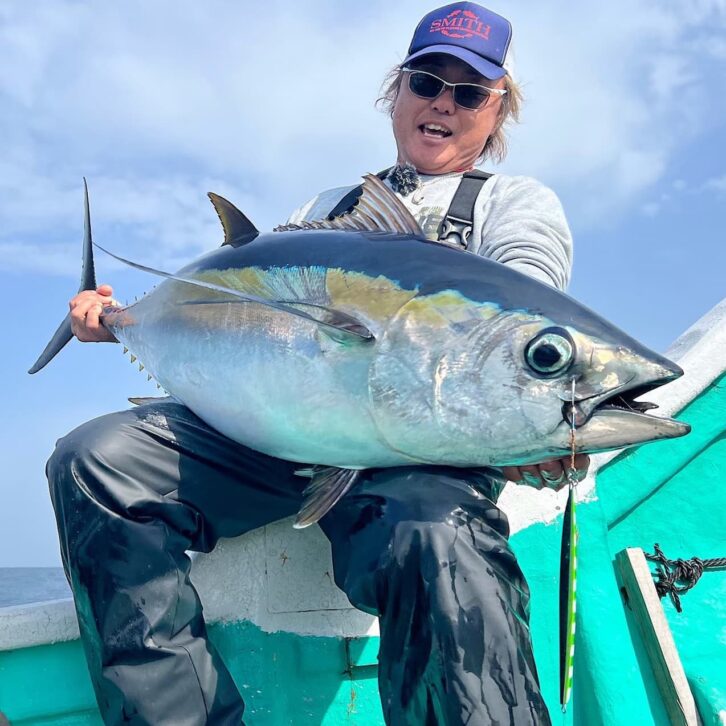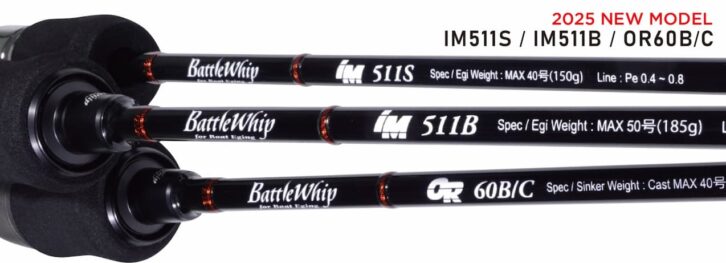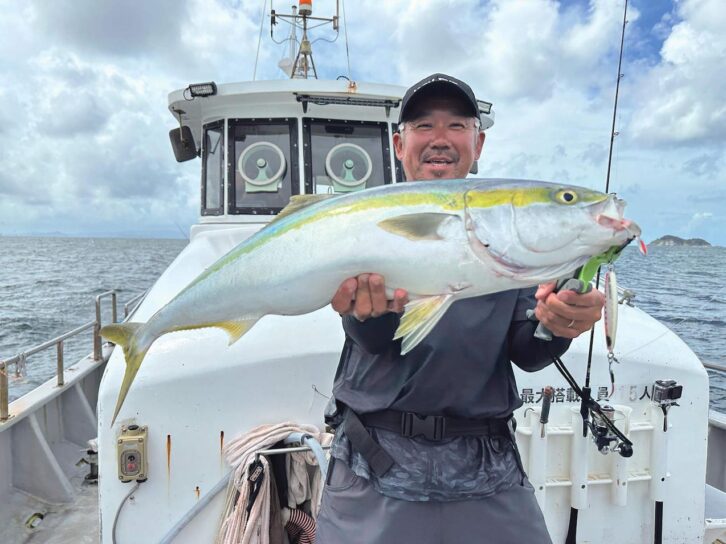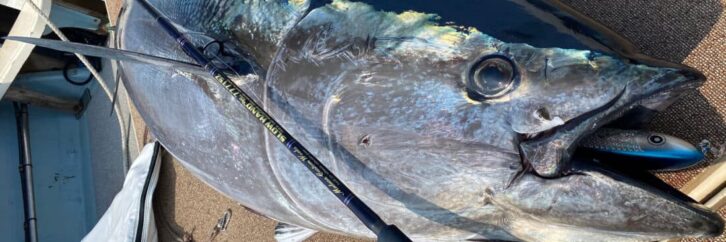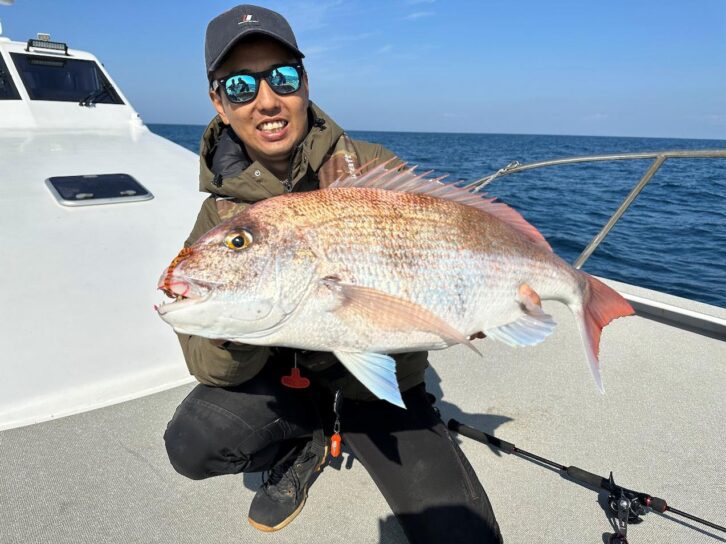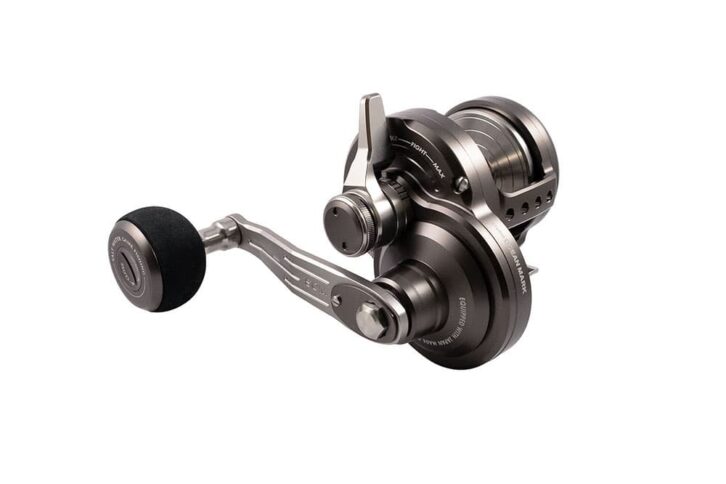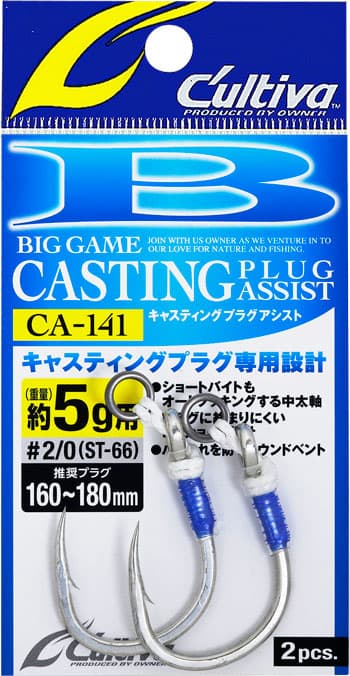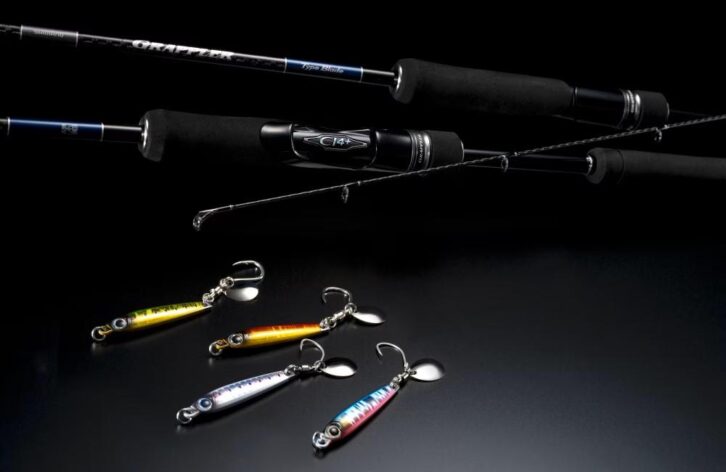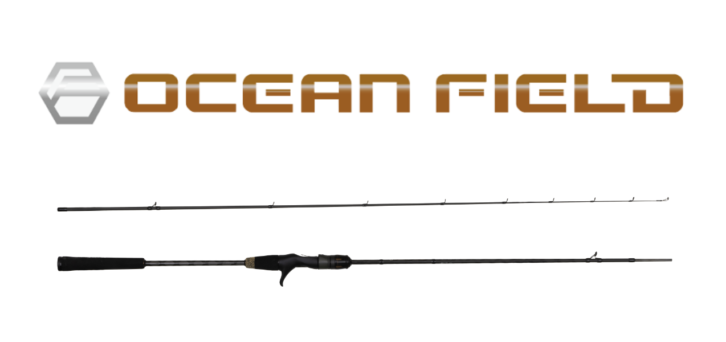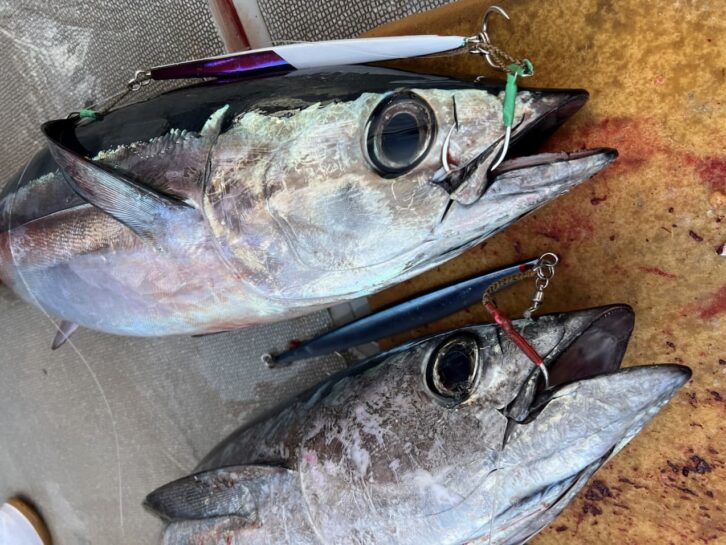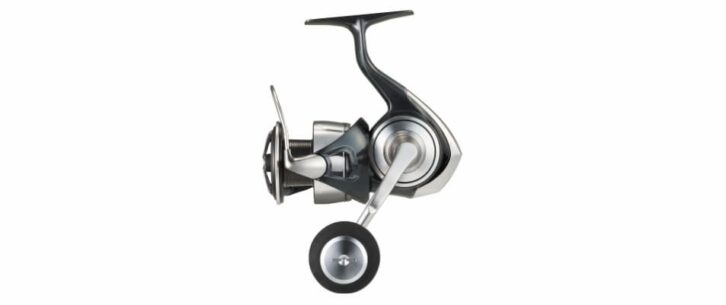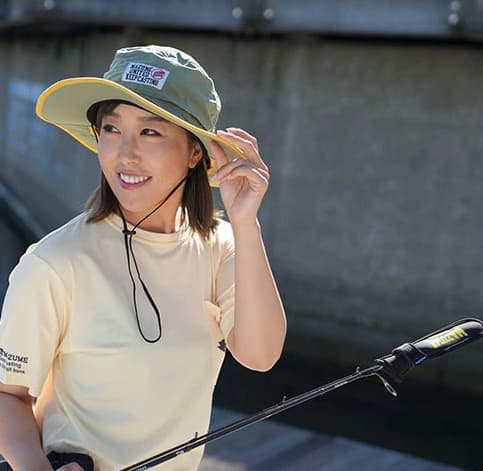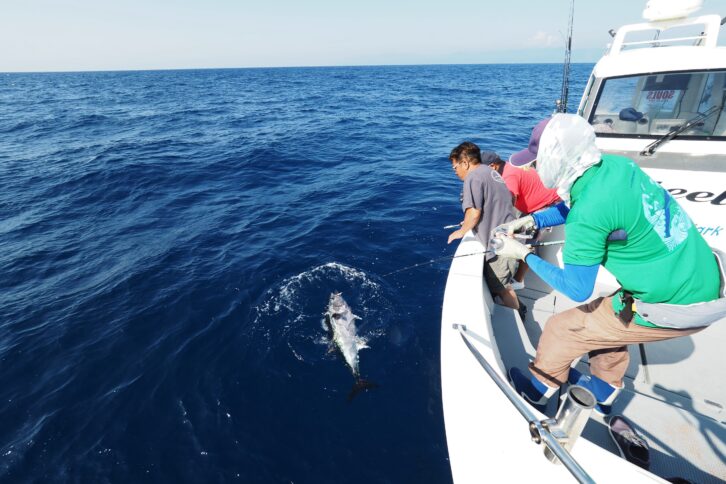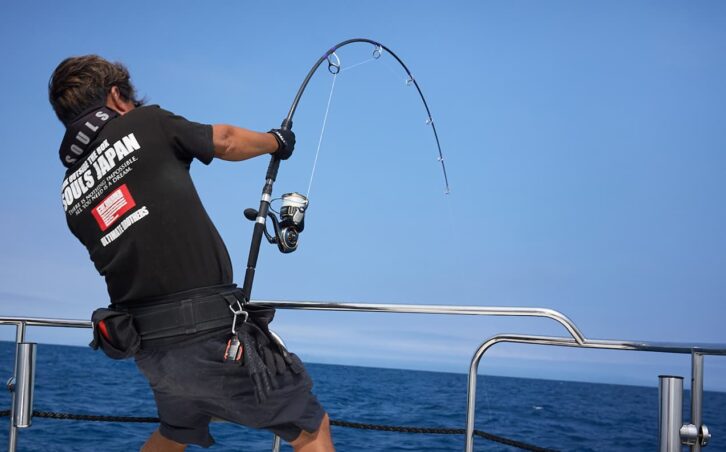Everyone will be addicted to the powerful bite scene!
Fun with the popular lure Big Bandit! Explained by Takashi Kamiyashiki! Tokyo Bay Big Bait Seabass Game
Boat seabass game using big baits has been popular in Tokyo Bay for the past few years. This style of seabass fishing was created to target large seabass that prey on whitebait, and it is an attractive form of fishing that allows anglers to experience the powerful bite scene and the high possibility of a large hit. The Big Bandit Japan version is now a must-have lure in the sea bass game. Mr. Takashi Ueyashiki of Mangrove Studio, the creator of the Big Bandit, gave us a summary of the big bait game and the tackle he uses.
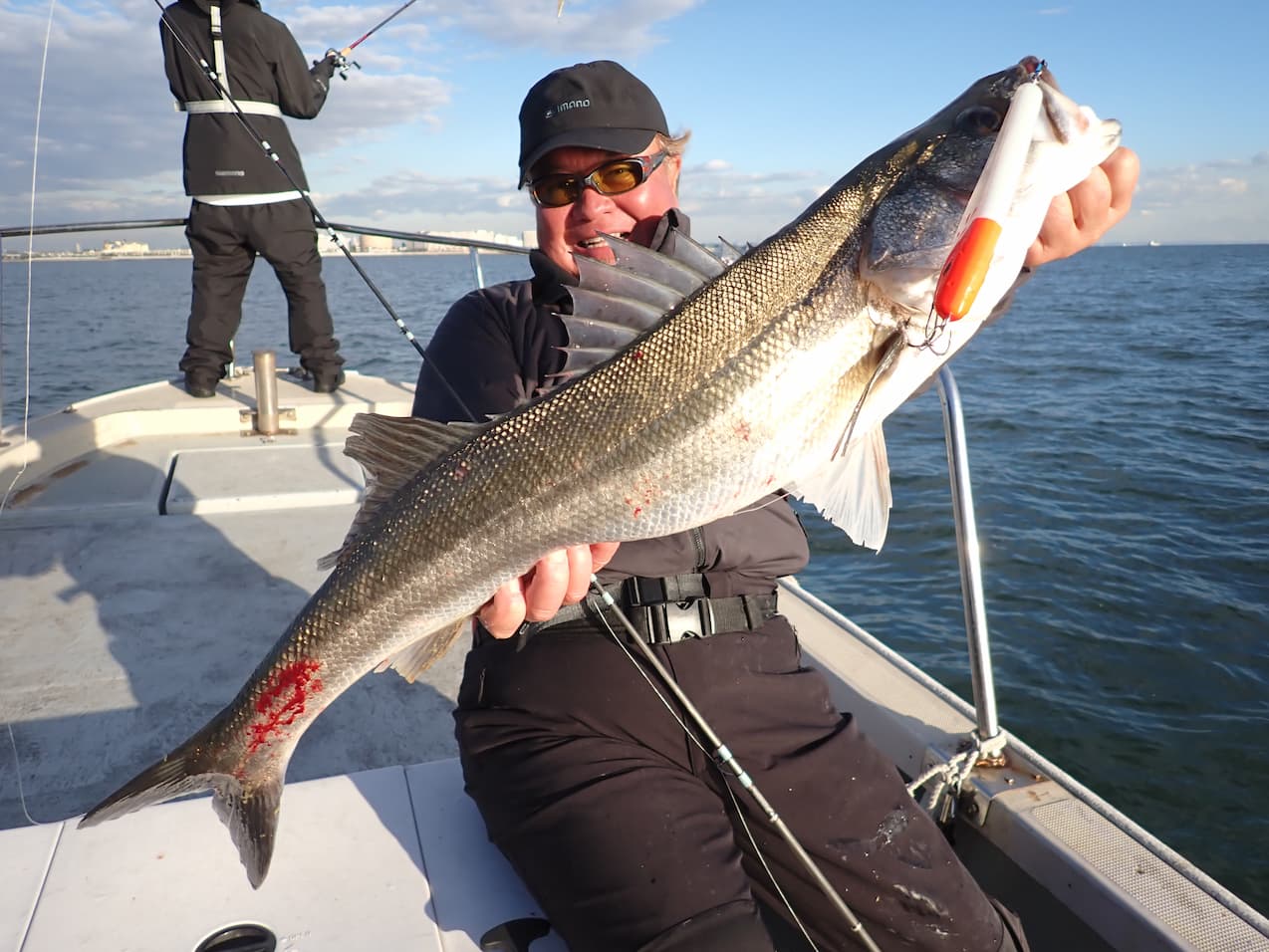
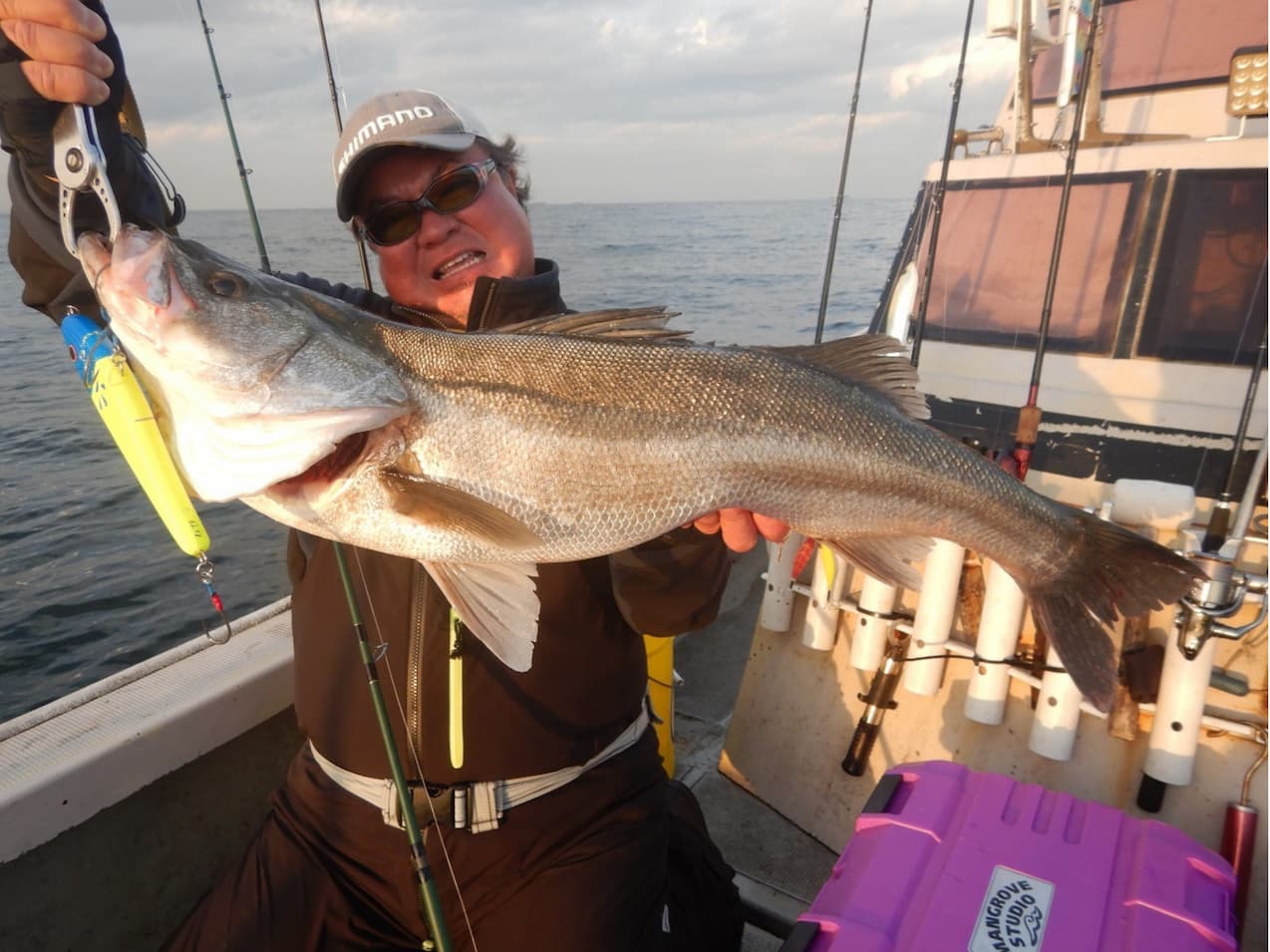
INDEX
Boat sea bass targeting lunkers that prey on large baits
Sea bass, known as “sea bass” in Japanese and “Japanese seabass” in English, is one of the most popular game fish in Japan, and its name “seabass,” taken from its English name, is well established among anglers. Seabass fishing has a variety of fishing methods, including inshore, offshore, casting, and jigging, each of which has been popular for many years. Among these fishing methods, the “big bait game” has become popular in recent years, with anglers targeting sea bass using lures as large as 20 cm in length and even “giant baits” using lures larger than 30 cm. Here, I would like to focus on the “big bait game” using lures in the 20 cm class.
I myself have been fishing for sea bass in various ways for a long time, but as I get older, I have come to enjoy the “process” of catching a single sea bass, a lunker of 80 cm or more, rather than catching many. I had been enjoying boat seabass fishing around Cape Futtsu in Uchibo since around 2013, and one day, I saw a bra running into a school of konoshiro (white croaker). Seabass? Bluefish? After seeing such a scene, he felt the need for specialized tackle, and in 2015, he began developing a rod. He started with the development of the “AVALON” 6.6-ft and 7.0-ft models, 3-piece bait rods that are compatible with big baits and can be used for overseas expeditions, followed by the “BIGBANDIT” model, which is the best match for the lure BIGBANDIT improved for big-bait sea bass and can be used with a variety of big-bait lures. The company then released the “BIGBANDIT/Stick, 6.6ft and 7.2ft” rods specially designed for use with a variety of big bait lures.
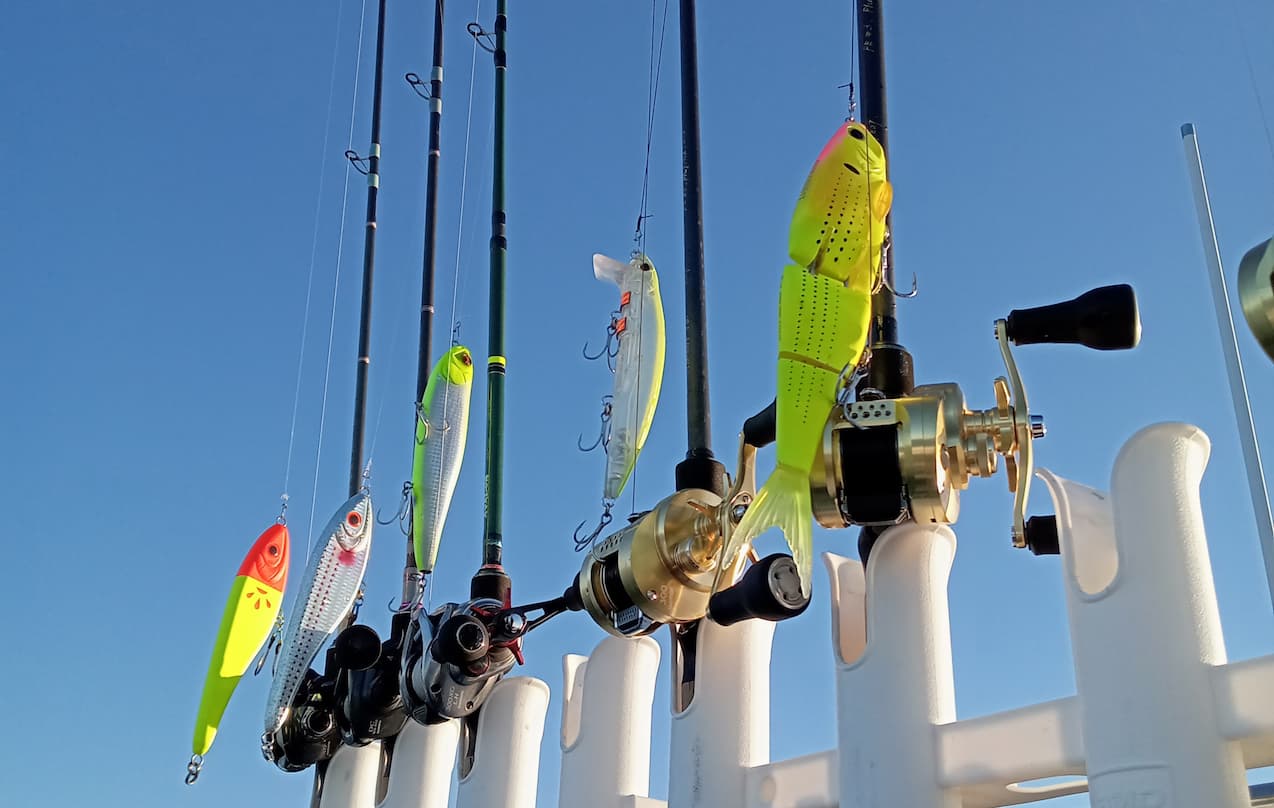
This is a game for targeting good-sized and large sea bass that attack large lures. It is not about catching a large number of fish, but about enjoying the process of catching one. It is very satisfying when you catch one.
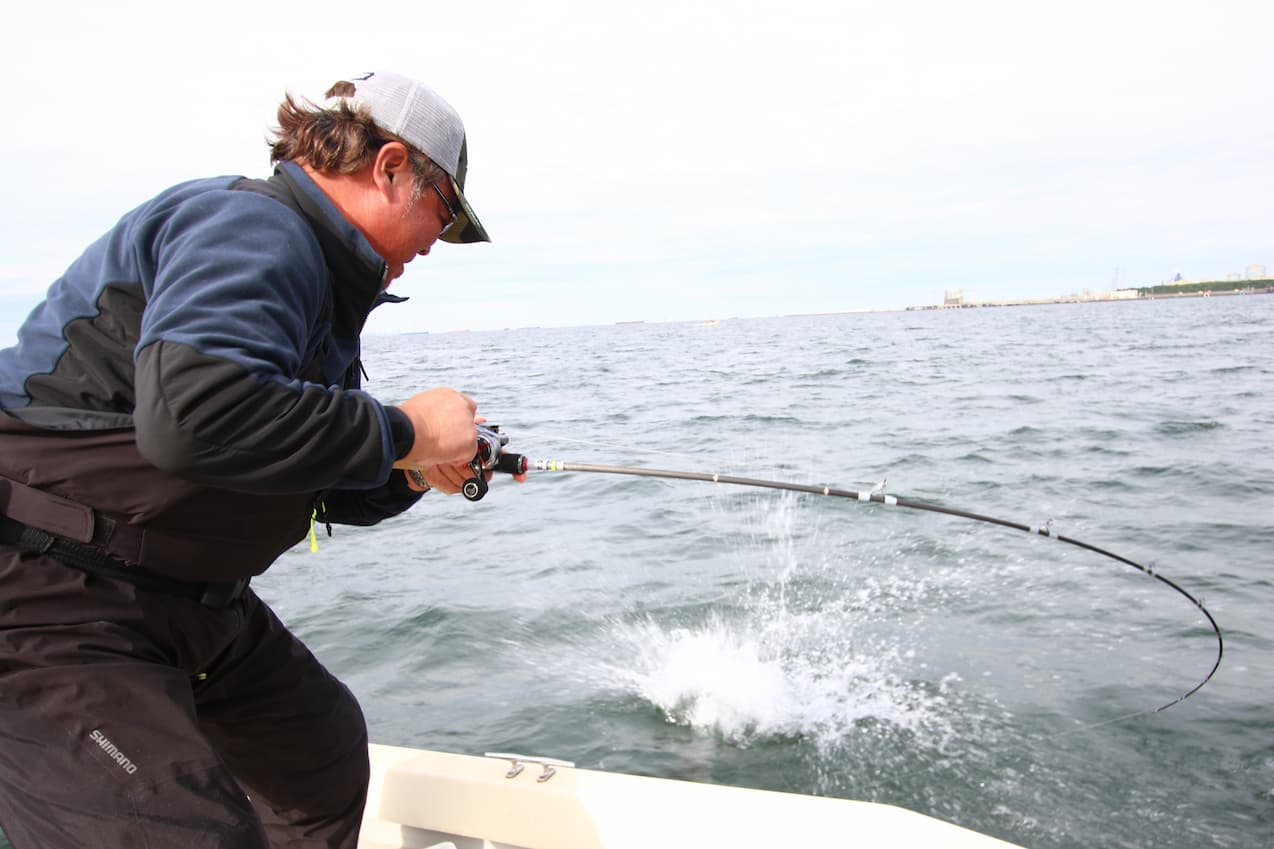
Mangrove Studio was fascinated by the big bait game and started from the development of rods. Currently, the lineup includes the Avalon and the Big Bandit Stick. Both models have proven themselves in Tokyo Bay.
Avalon
https://www.mangrove-studio.com/mangrove_s/products/ocean/ocr-avl.html
Big Bandit Stick
https://www.mangrove-studio.com/mangrove_s/products/ocean/ocr-bbs.html
The birth of the lure Big Bandit. Ten years of maturation.
In the early days before the big-bait sea bass style was established, many different lures were tried. The challenge was to use lures whose silhouette was close to that of predatory “konoshiro,” such as large pencil baits used for musky, pike, offshore, etc. overseas, jointed swimbaits for black bass, and BIG spoons.
Then I asked myself, “What is the best part of this fishing? Topwater” fishing, in which the fish breaks the surface of the water, became the most enjoyable of all, and this became the typical method of targeting the fish. After that, specialized tackle was released one after another by various companies. A huge Japanese-made pencil for sea bass appeared. Among them, Woodream’s D Bonito 230 and Megabass’s Megadoc 220 were shocking with their high degree of perfection. Mangrove Studio, on the other hand, turned its attention to the Big Bandit 195mm developed by Strike Pro for the Scandinavian company CWC. We thought its flat silhouette like a whitebait was also good, so we immediately ordered it. Then, with the help of Captain Takahashi of “Obsession” in Futtsu, we immediately proceeded with the test.
The “Big Bandit” was a suspending and sinking lure in its home country, but with the same rod work as a pencil, it produced a sharp and distinctive action, twisting its body and sending it flying from side to side. As I had imagined, the Big Bandit was very effective for seabass that were biting whitebait. The more bites I got, the more interesting they became. I still remember the scene.
After that, I set the weight lighter than the Scandinavian specifications and tuned the lure so that it could be handled as a complete topwater lure. Furthermore, a light rattle sound that was effective for sea bass was added, and the “Japan specifications” were created. Then, in 2017, the product went on sale. Now, thankfully, many anglers are using it.
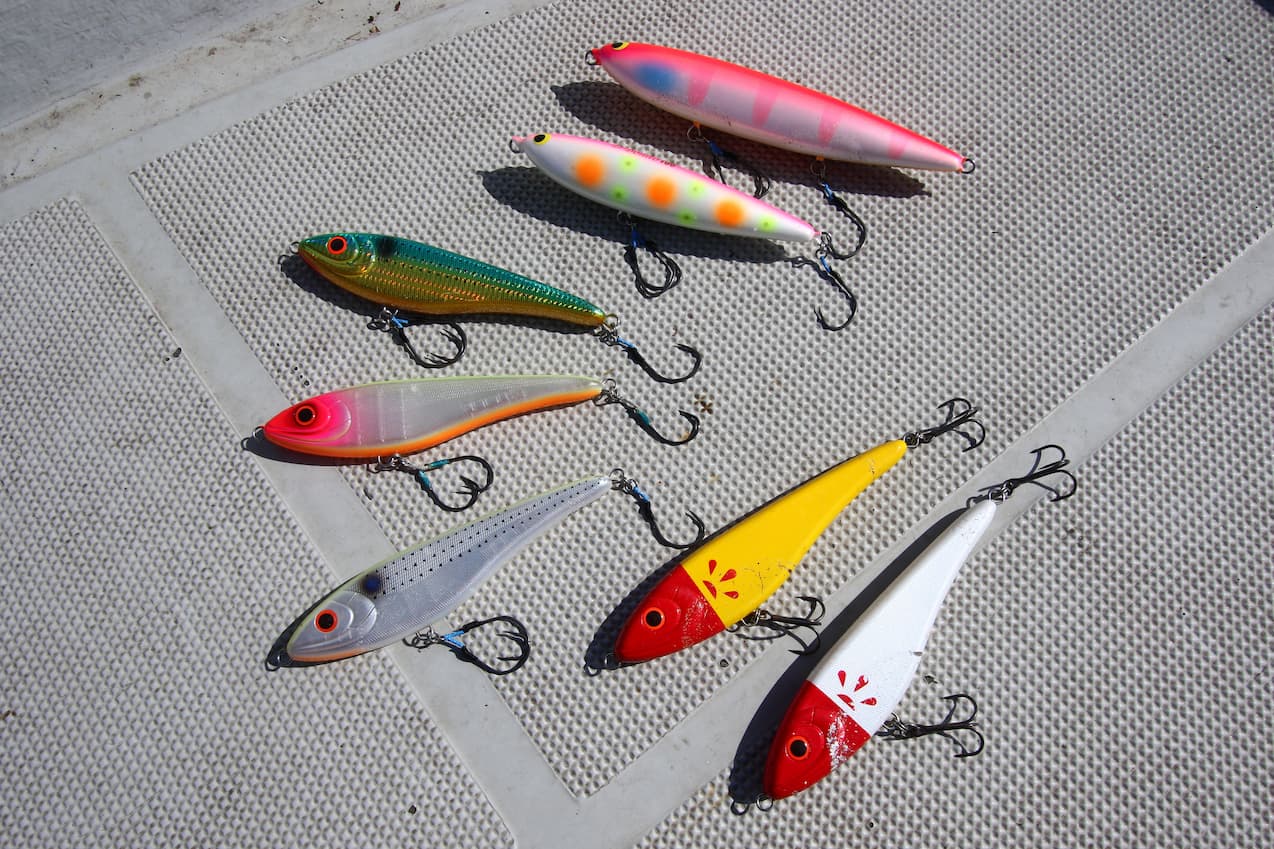
Big Bandit and D Bonito (top two in photo).

We thought that Strike Pro’s Big Bandit 195mm, which has a flat silhouette like a whitebait, would work well for sea bass, so we ordered it and modified it to Japanese specifications to become Mangrove Studio’s Big Bandit.
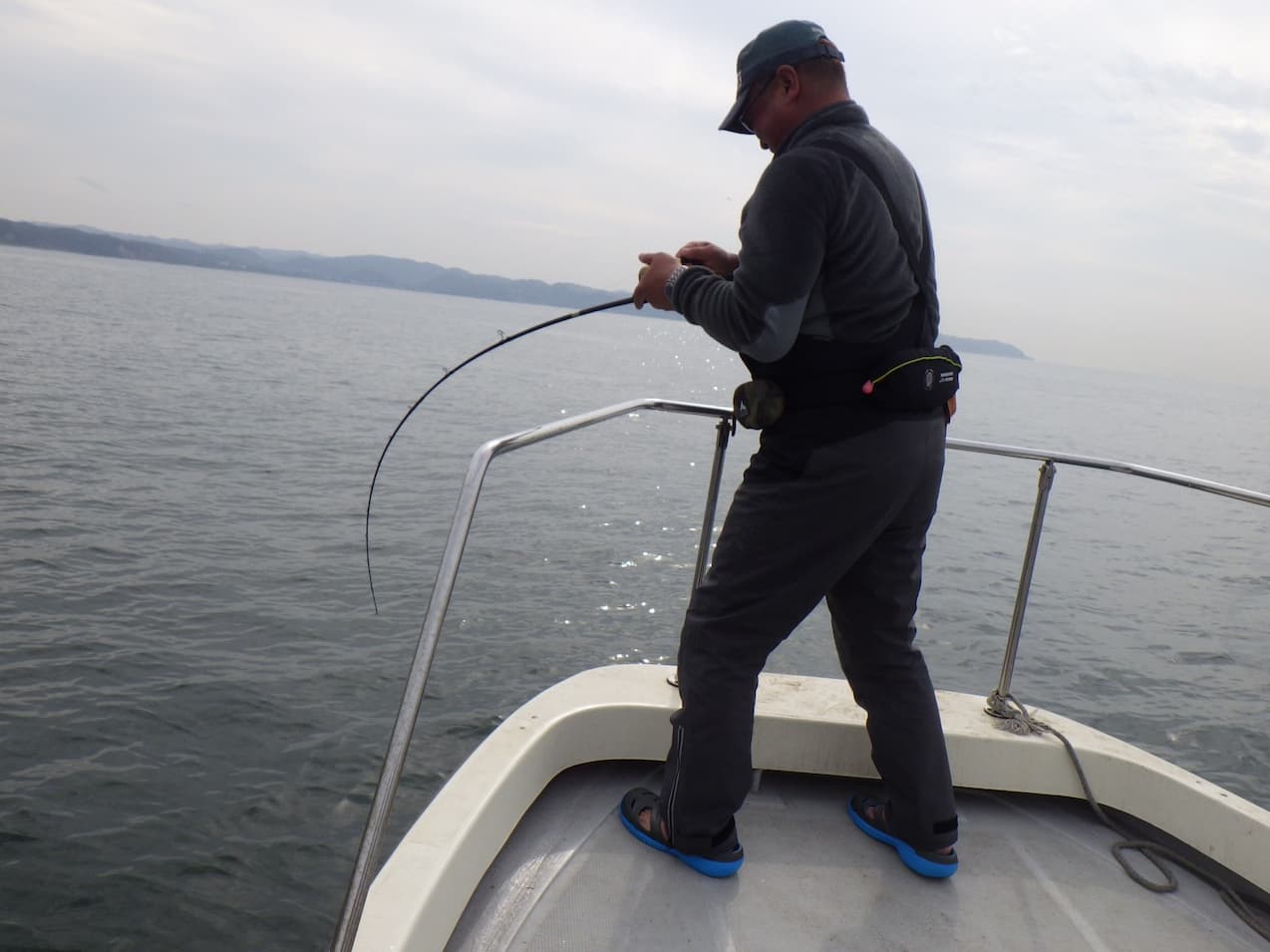

Test scene before the launch of the Big Bandit in 2017. We caught a lot of sea bass anyway.

A hit on the D Bonito 230. Excellent lure that dogwalks snappily from side to side.
How to move the Big Bandit.
The basic method of moving the Big Bandit is vertical or downward rod work, using 10-20% gentle force to lightly tap the PE line on the surface of the water. This creates a “dock walk” movement from side to side.
Incidentally, the action does not have to be regular. The deliberate tempo fluctuation of the action will turn on the seabass’s prey switch. The less active the sea bass are, the more timing you need to give them a “pause” in their feeding. For example, if the fish moves to the left or right in a 1, 2, 3 sequence, then take 0.5 or 1 breath? Two breaths? (This is the pause), then move to 4, 5, 6, and so on. After dogwalking from side to side, move in a wobbly motion. Seabass will suddenly come to the surface and attack the lure, or they will slowly follow the plug and bite. Even if the lure misses the bite and is sent away, it sometimes bites after landing (another bite). It is an irresistible moment. In all of these cases, you must not hook the lure too quickly. The angler’s own familiarity and experience are sometimes put to the test when it comes to hooking the lure.
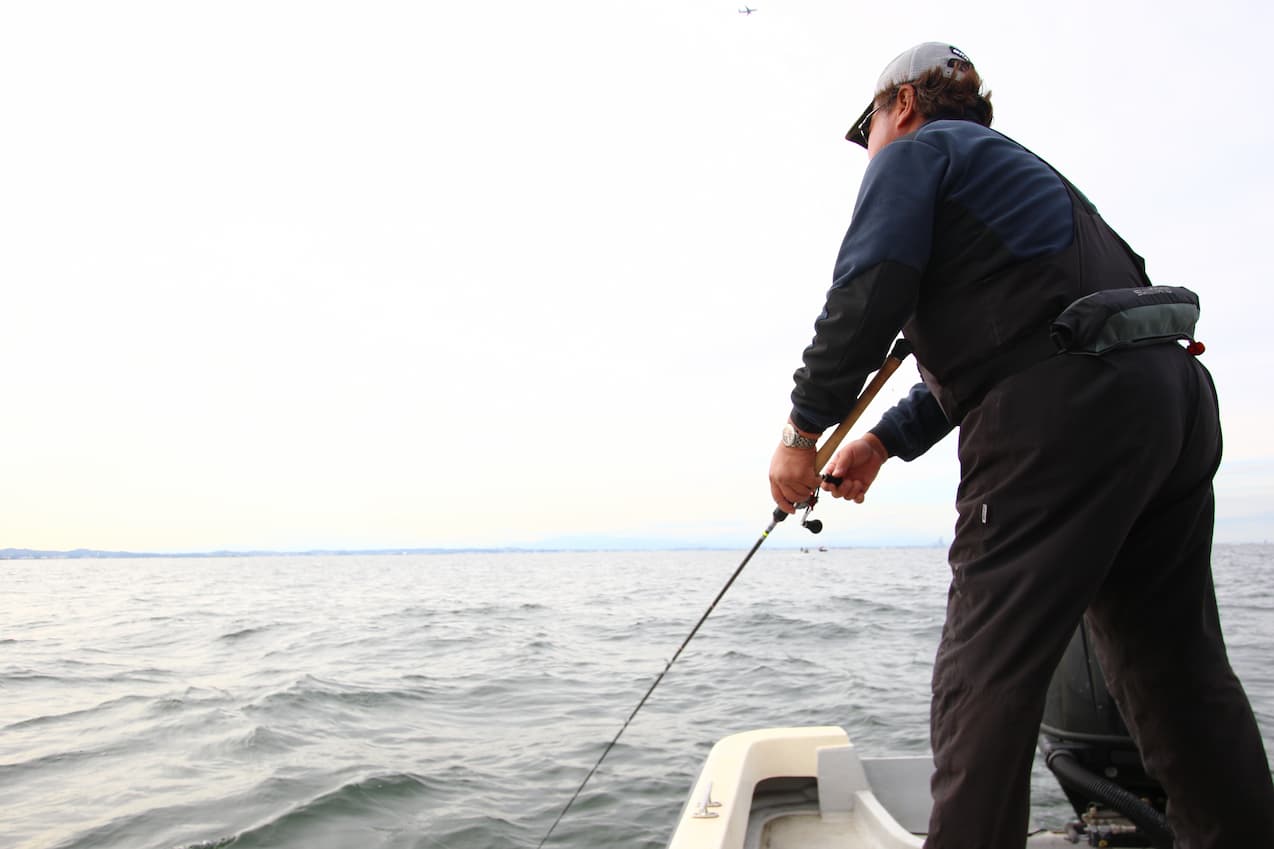
The Big Bandit is moved by lowering the rod tip and reeling in the reel. This continuous movement produces a dogwalk that moves from side to side. Seabass will hit even if you don’t move it regularly.
Hook System
Let me introduce my hook setting on the Big Bandit.
First, orthodox front and rear treble hooks are used. Set a fine to medium shaft 2/0 size. The recommended hook is “BKK/SPEAR21―UA 2/0. Two rings are attached when connecting in order to keep the flexibility of the bu hook.
Next is the “Lunker Perfect Hook 2/0” in single hook version. Shout for Big Bandit! for the Big Bandit. Twin hooks are attached to the belly and a single hook to the tail.
A treble hook may also be attached to the belly only. In this case, two or three rings are attached to the tail to adjust the balance.
I use these hooks in different ways depending on the feeding conditions of sea bass. Incidentally, all hooks are barbless, with the Kaeshi crushed. Seabass fishing is designed to be released. Therefore, the sea bass caught are quickly unhooked, not touching the fish unnecessarily, and released after doing their best to resuscitate it.
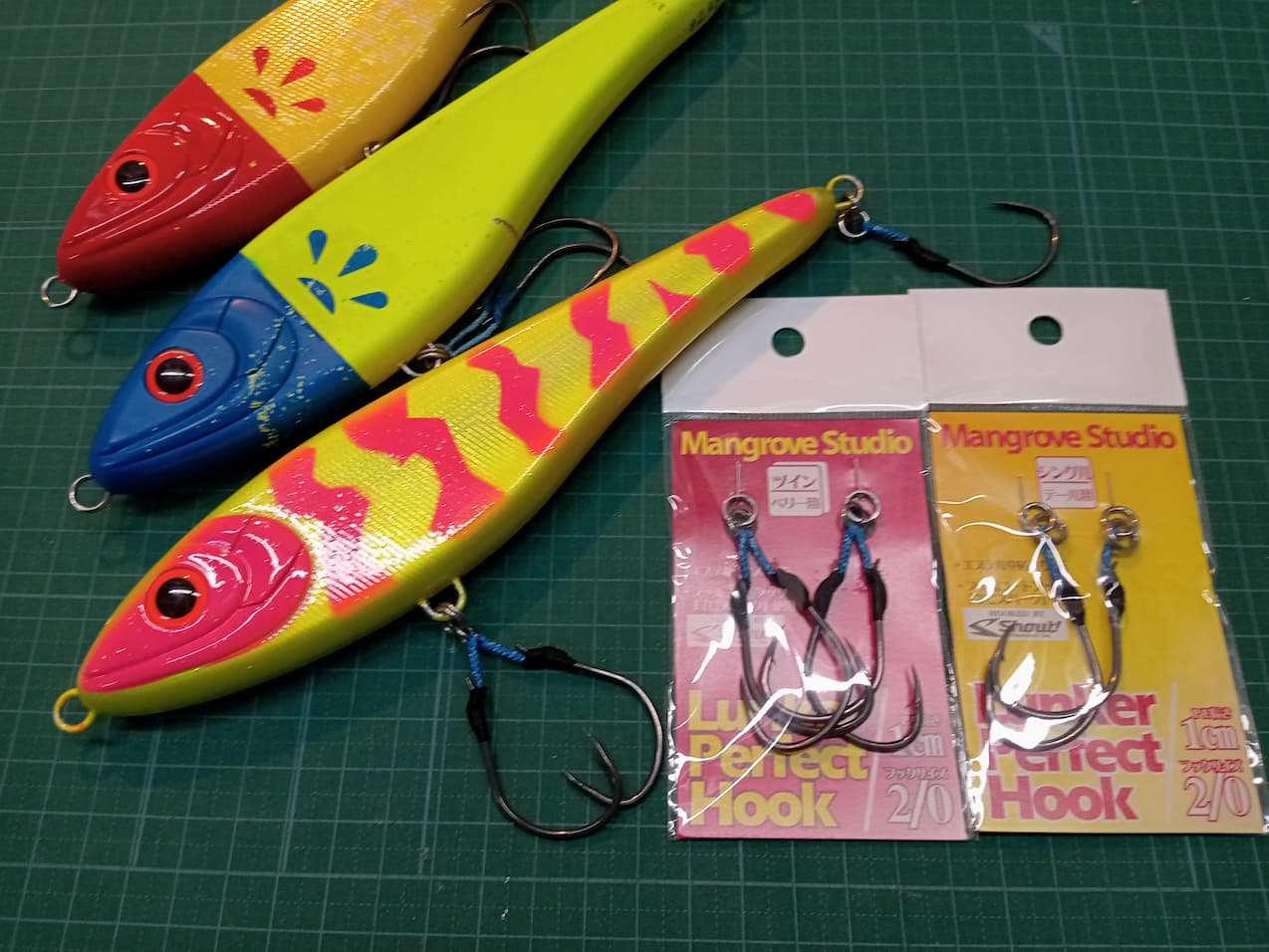
Big Bandit promotional video
If you check the bite scene in slow motion in the Big Bandit “PR Video,” 100% of the bites are from the middle of the body to the head.
Ideal Tackle Setting
So what kind of tackle setting is best? I would like to share my thoughts based on my experience so far. Here are my recommendations for using large pencil and jerkbait lures in the 20 cm class, weighing around 100 g, which can be called “big baits,” and manipulating them with rod action and line slugs.
First of all, the rod should be 6 to 7 ft. in length, 7 to 8 ft. for reeling lures, and should be long enough to be easily cast even if the rod tip touches the surface of the sea during action. The rod should be torquey and have a good groove. Incidentally, short and stiff rods under 6 feet are not recommended. The best rod is one that can hold a bite and is easy to cast. The “AVALON 6.6ft, 7.0ft” and “BIGBANDIT/Stick 6.6ft, 7.2ft” (rods specially designed for this game) were developed to provide such performance.
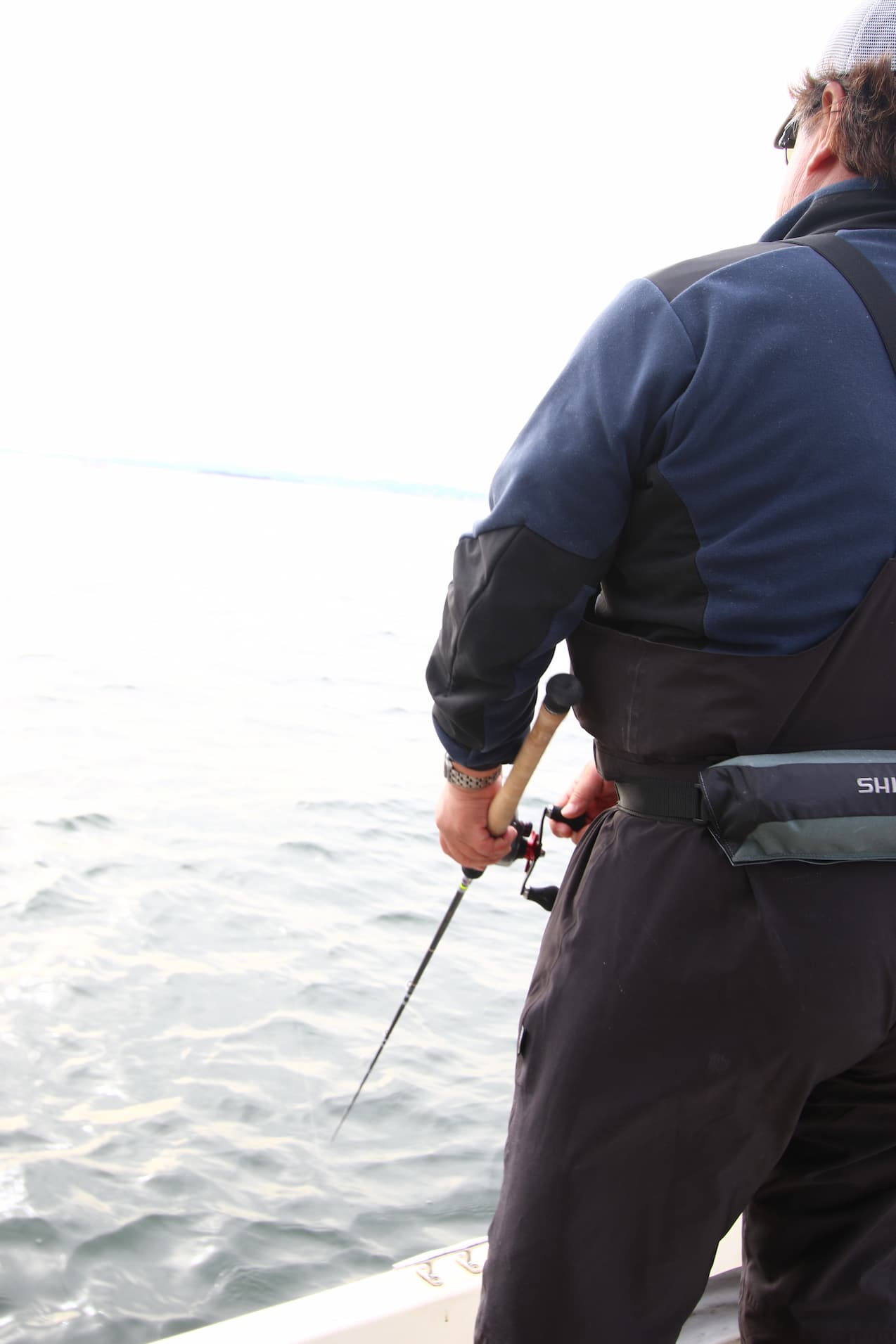
A rod that is too stiff for heavy lures will cause many anglers to get caught, and above all, it is no fun. It is important to have a rod that is torquey, but also long enough to be easy to cast and control, and flexible enough to absorb the movement of a seabass after a hit and prevent it from breaking apart.
Next, a low-pro type bait reel that is easy to perch and light in dead weight is easy to use because large pencil and jerkbait lures weighing close to 100 g can be manipulated with rod work for a long time (6 to 12 hours). His favorite baits are Antares DCMD, Scorpion 200MD, and Exsense DCSS. Reels with dead weights in the 200g range are light and less fatiguing, and can be operated comfortably all day long.
On the other hand, we sometimes use “reeling” lures such as swimbaits, vibration lures, and wake lures. These lures are cast a long distance and moved at a constant speed or with the action of the handle, and the Conquest 300XGLH is recommended for such reeling because of its strong reeling power. It is rigid and can respond to strong reeling action. Scorpion 300MD” is also recommended.
For pencil baits and other lures that require strong rod action, we select PE No. 3-5 (Varibass SMP). The leader is connected with a friction knot such as PR or FG (finished to within 2 cm) that passes smoothly through the guide ring and causes as little snagging as possible at the knot point when reeling in. The leader should be a 50-70lb nylon shock leader attached at 1 fathom (within approximately 150cm).
PE line can be used for reeling, but we also recommend using low-stretch nylon (Baribus BBM) 30-35lb without a leader, directly connected to a reinforced snap. This line has the advantage of moderate line elongation, making it difficult to be caught once a hit is made, and also making it less prone to backlash.
In addition, reinforced snaps that can be changed quickly are essential to make it easier to attach and detach lures and colors and to avoid missing the right moment to time the lure. This is a snap-only item with no swivel or other attachments. We recommend the strong “BKK Duroc Snap” and “Fishing Fighters Ironman Snap,” and recently we also like BKK’s “Fast Snap #3,” which is easy to attach and detach and strong.

Topwater fishing is the most enjoyable way to catch fish, but there are times when conditions make it difficult to get to the top. In such cases, reeling lures come into play. A torquey reel is necessary to use lures with heavy reeling resistance.

My favorite snap these days: #3 of BKK’s “Fast Snap,” which allows me to quickly attach a lure without having to spread it out with pliers.
Season and what to keep in mind when fishing this
Generally speaking, the “whitebait” bait appears around August or September, and the “whitebait pattern,” as it is commonly called, begins and peaks around November, which is the cycle every year. Recently, however, it has been discovered that hits can be obtained even without the kokoshiro in mind.
After the New Year’s Eve, surface water temperature is 8-13°C, and there are areas where spawning individuals that have fallen to deeper water wait around 10-15 m depth. Including spawning recovery individuals, they will hit the big baits until around March regardless of the whitebait. Although it is hard to catch them on the top of the baits, big vibration baits such as “Da Vinci” which can be traced at the depth of 2m or so can get them to hit the baits. This has led to an increase in the number of fishing trips each year, and he also brings the same tackle to the San-in areas of “Nakaumi” and “Lake Shinji” during the rainy season to enjoy the “big bait game” to the fullest.
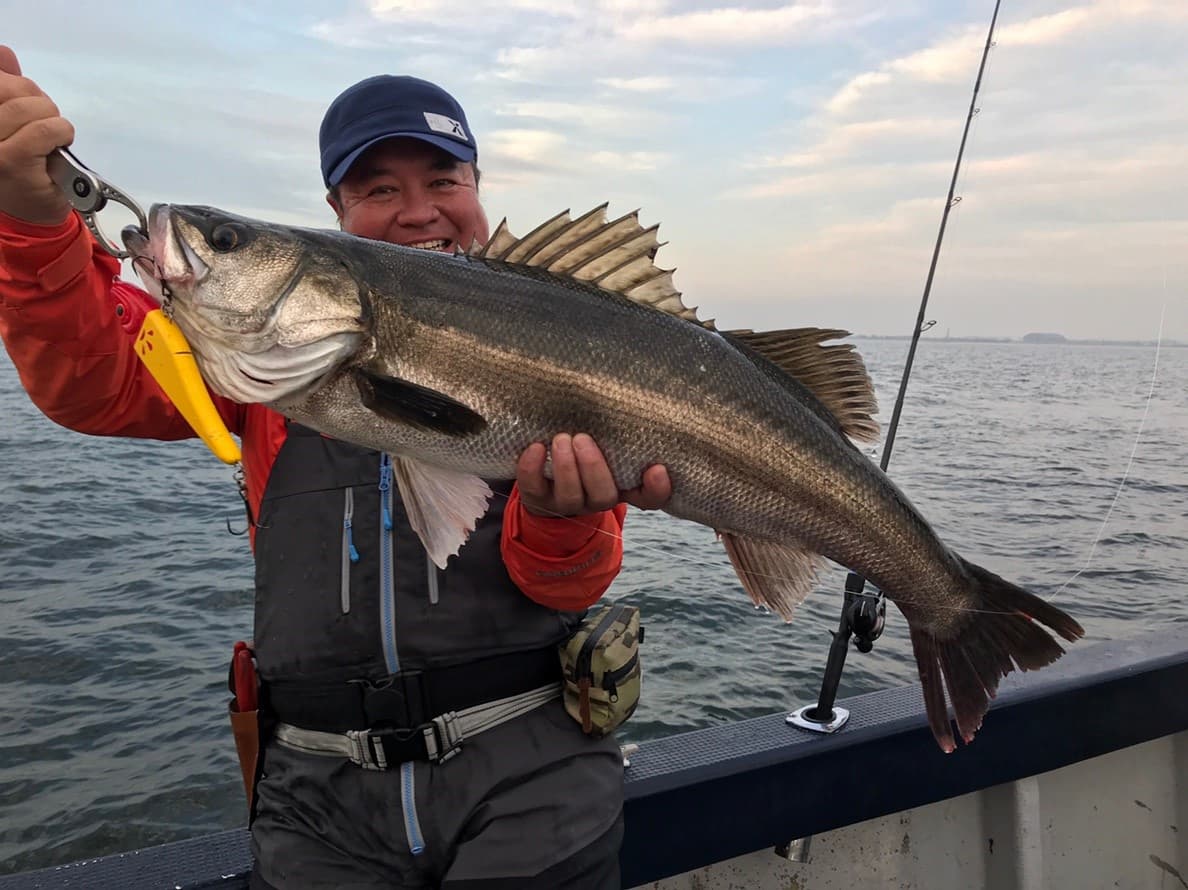
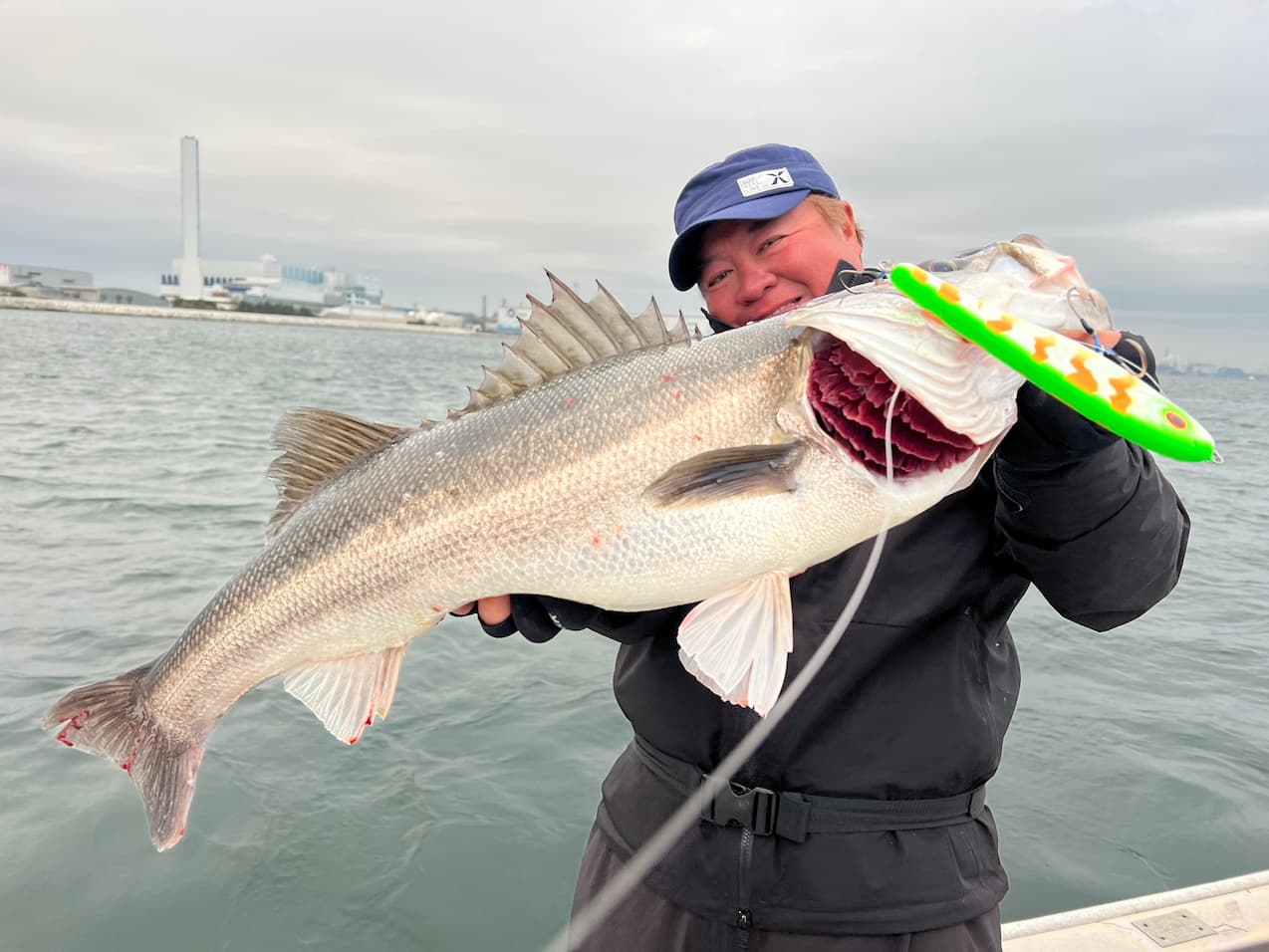

Tokyo Bay is a rich field for sea bass, but the numbers are decreasing year by year. Still, by continuing to cast without giving up, you can meet with a lunker class.
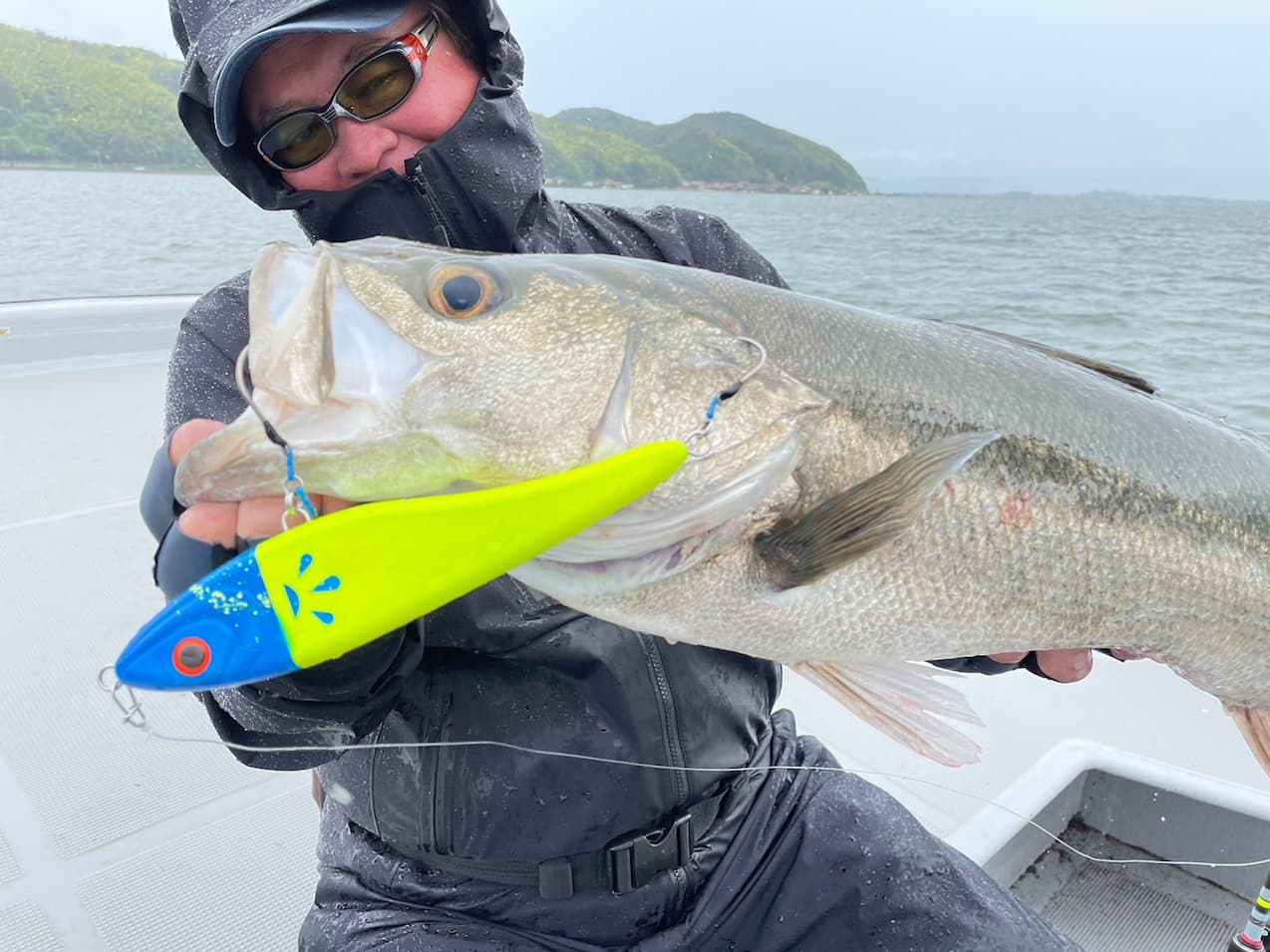
Fishing with Big Bandit in the Nakaumi Sea, Shimane Prefecture, Japan. We hope that this fun fishing will spread to other areas more and more.
With the recent rise in popularity of the big bait game, the pressure on fishing grounds has naturally increased as anglers are searching for new fish in place of the old ones. Therefore, the era in which anglers will bite anything as long as it is a big lure is over. Even if it looks like it looks fishable, it is often the case that you end up with no catch after only a few chases.
In order to enjoy this fishing for a long time, it is necessary for each angler to release the lure perfectly. We hope that after the release, the fish will continue to grow and leave behind large individual DNA offspring, and enjoy this fishing experience.
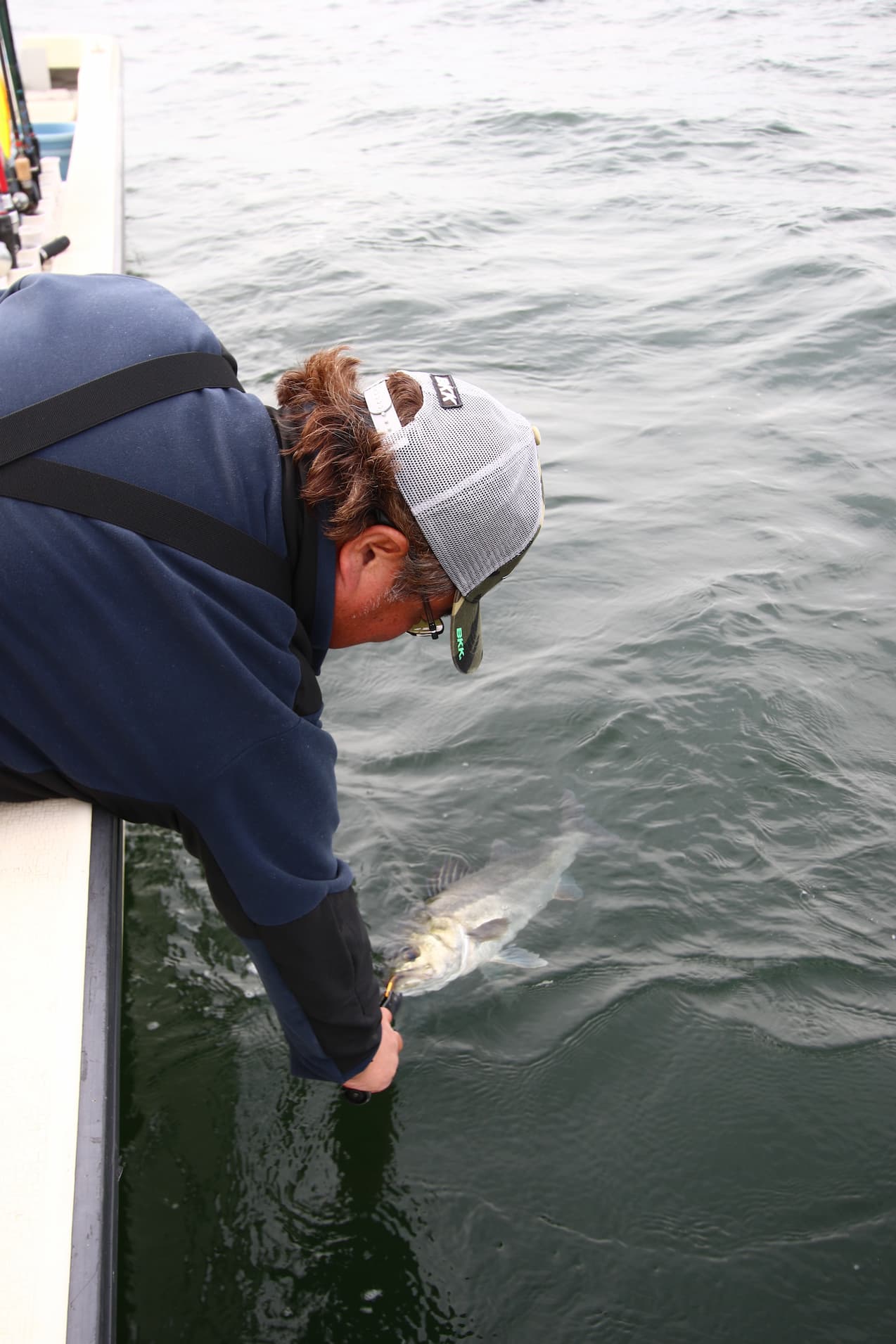
To enjoy this fishing for many years to come, we want to quickly and thoroughly resuscitate and release each seabass hit to avoid damaging it.
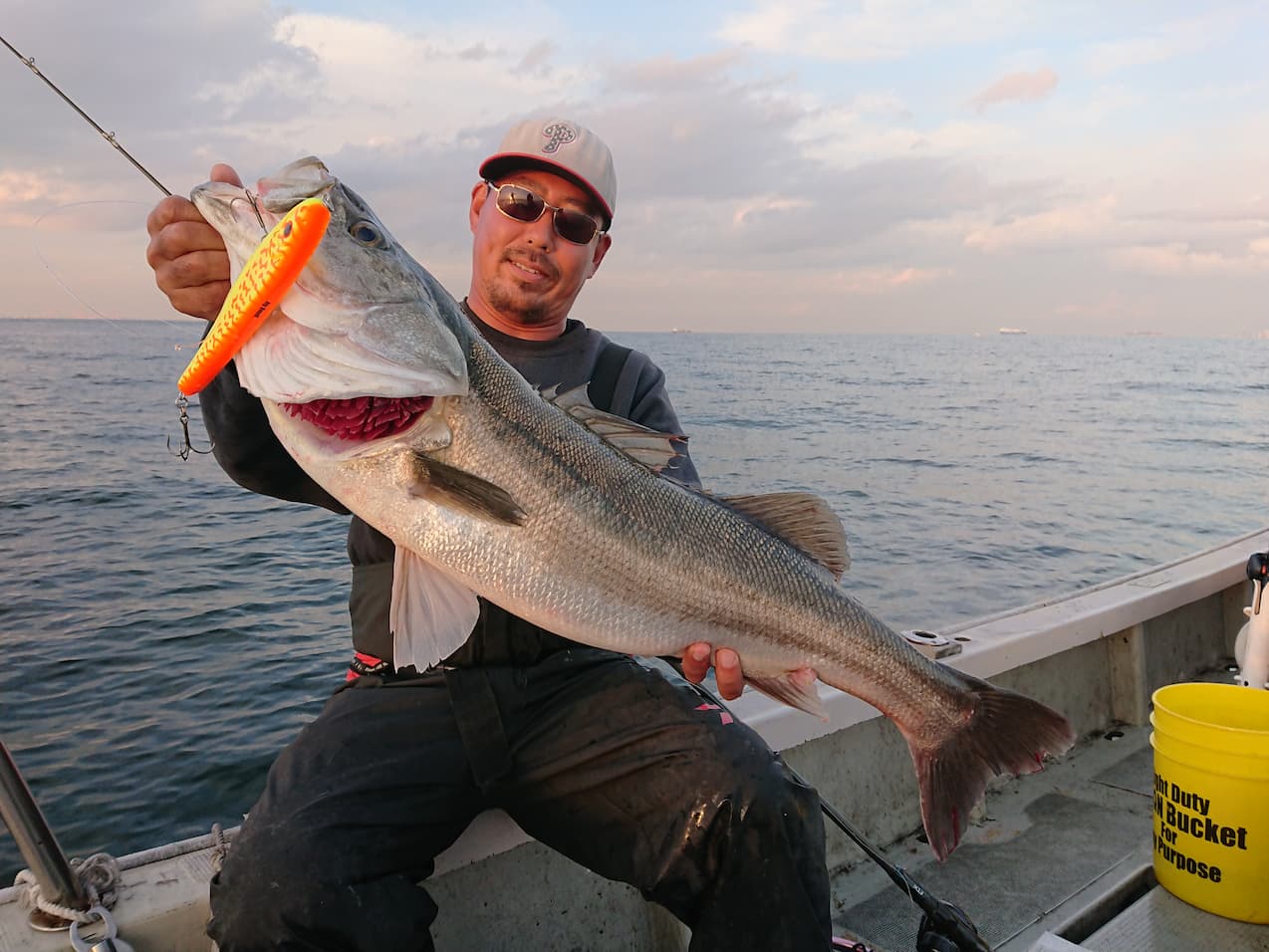
Thick and well proportioned over 90 cm. The best moment!



